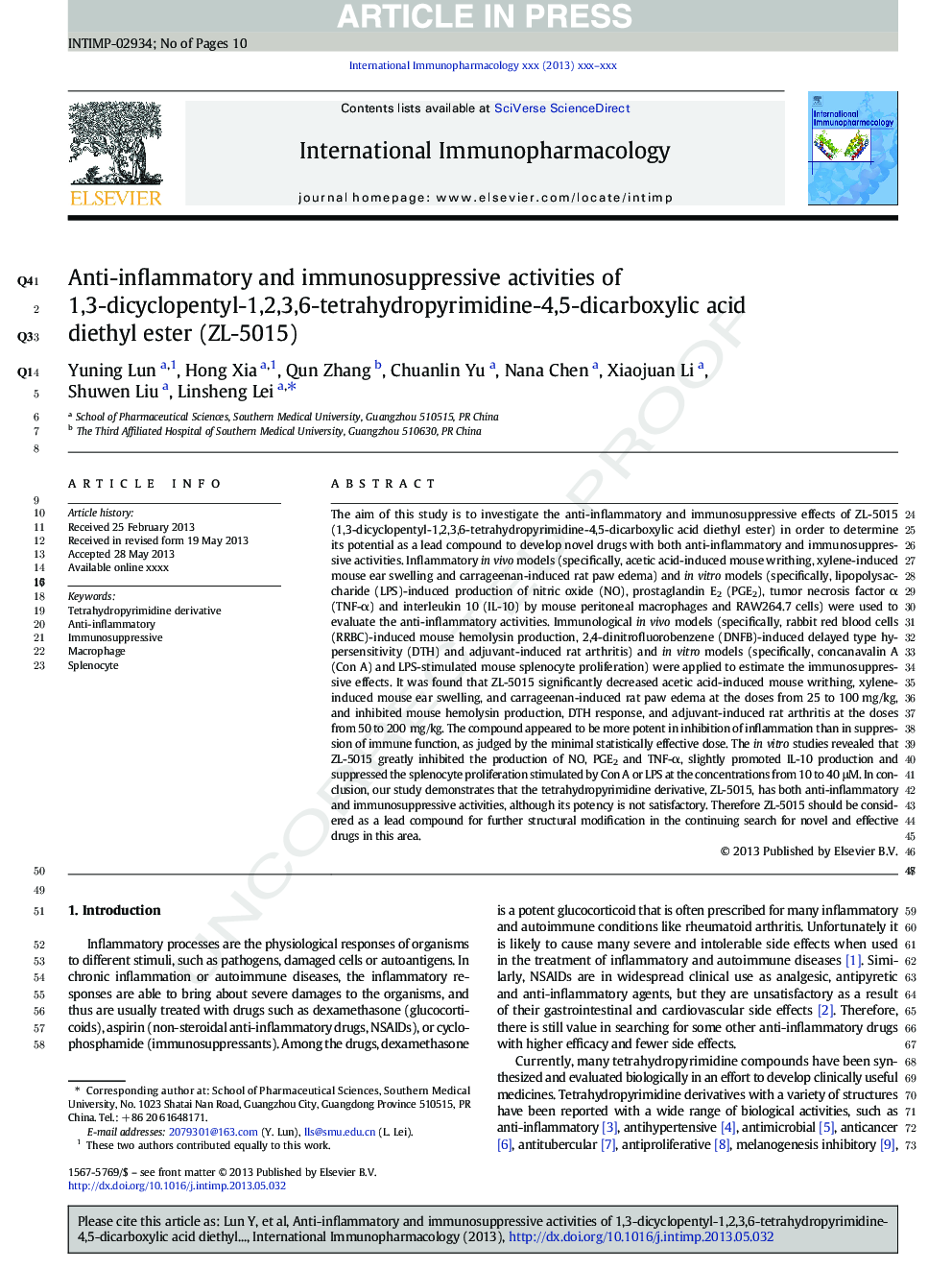| Article ID | Journal | Published Year | Pages | File Type |
|---|---|---|---|---|
| 5833352 | International Immunopharmacology | 2013 | 10 Pages |
Abstract
The aim of this study is to investigate the anti-inflammatory and immunosuppressive effects of ZL-5015 (1,3-dicyclopentyl-1,2,3,6-tetrahydropyrimidine-4,5-dicarboxylic acid diethyl ester) in order to determine its potential as a lead compound to develop novel drugs with both anti-inflammatory and immunosuppressive activities. Inflammatory in vivo models (specifically, acetic acid-induced mouse writhing, xylene-induced mouse ear swelling and carrageenan-induced rat paw edema) and in vitro models (specifically, lipopolysaccharide (LPS)-induced production of nitric oxide (NO), prostaglandin E2 (PGE2), tumor necrosis factor α (TNF-α) and interleukin 10 (IL-10) by mouse peritoneal macrophages and RAW264.7 cells) were used to evaluate the anti-inflammatory activities. Immunological in vivo models (specifically, rabbit red blood cells (RRBC)-induced mouse hemolysin production, 2,4-dinitrofluorobenzene (DNFB)-induced delayed type hypersensitivity (DTH) and adjuvant-induced rat arthritis) and in vitro models (specifically, concanavalin A (Con A) and LPS-stimulated mouse splenocyte proliferation) were applied to estimate the immunosuppressive effects. It was found that ZL-5015 significantly decreased acetic acid-induced mouse writhing, xylene-induced mouse ear swelling, and carrageenan-induced rat paw edema at the doses from 25 to 100 mg/kg, and inhibited mouse hemolysin production, DTH response, and adjuvant-induced rat arthritis at the doses from 50 to 200 mg/kg. The compound appeared to be more potent in inhibition of inflammation than in suppression of immune function, as judged by the minimal statistically effective dose. The in vitro studies revealed that ZL-5015 greatly inhibited the production of NO, PGE2 and TNF-α, slightly promoted IL-10 production and suppressed the splenocyte proliferation stimulated by Con A or LPS at the concentrations from 10 to 40 μM. In conclusion, our study demonstrates that the tetrahydropyrimidine derivative, ZL-5015, has both anti-inflammatory and immunosuppressive activities, although its potency is not satisfactory. Therefore ZL-5015 should be considered as a lead compound for further structural modification in the continuing search for novel and effective drugs in this area.
Related Topics
Life Sciences
Immunology and Microbiology
Immunology
Authors
Yuning Lun, Hong Xia, Qun Zhang, Chuanlin Yu, Nana Chen, Xiaojuan Li, Shuwen Liu, Linsheng Lei,
